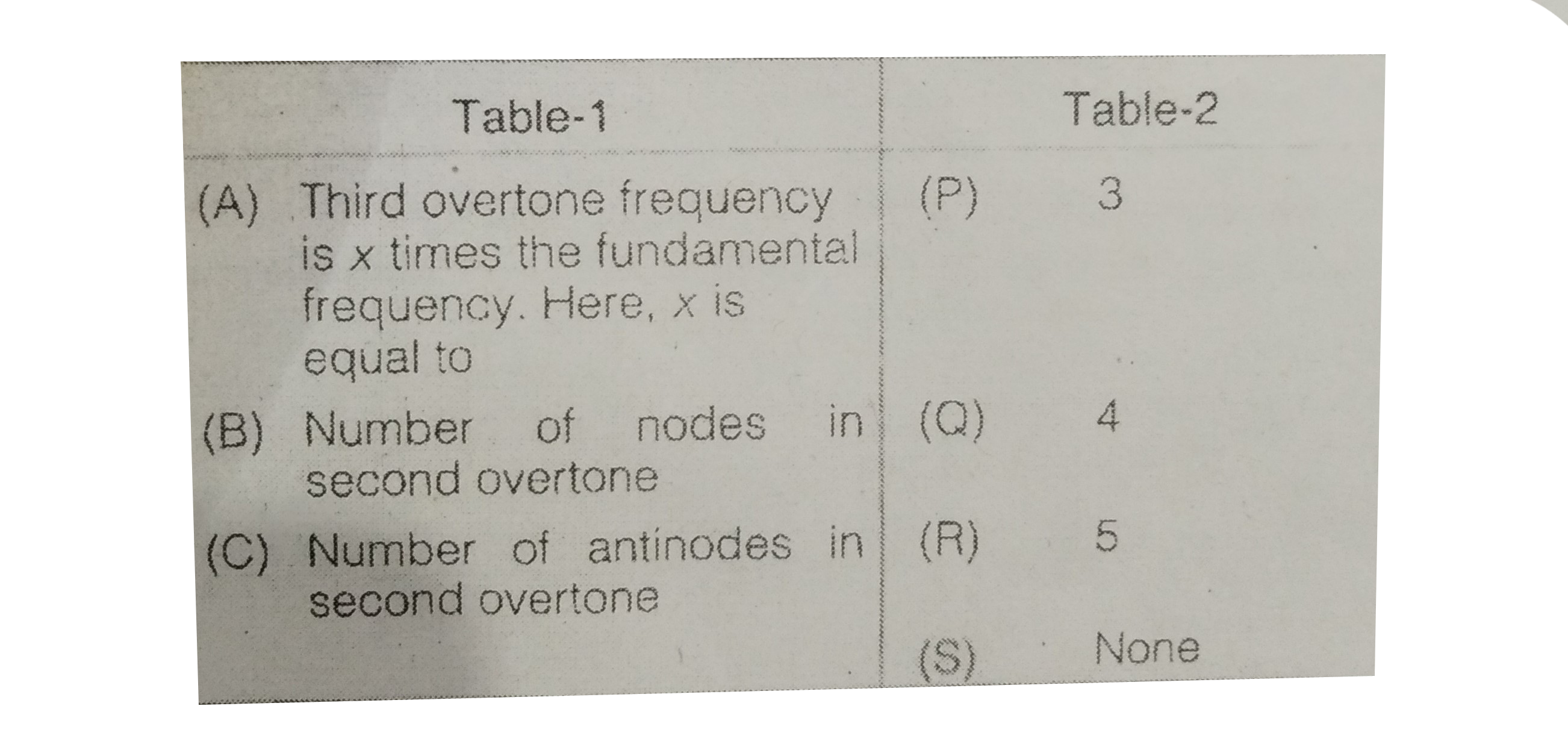A): An open organ pipe of certain length have the same fundamental frequency as closed organ pipe of half the length.
(R): In the case of open organ pipe, at both the ends antinodes are formed, while in the closed organ pipe at one end antinode and at the other end node is formed.
Both 'A' and 'R' are true and 'R' is the correct, explanation of 'A'.
Both 'A' and 'R' are true and 'R' is not the correct explanation of 'A'
A' is true and 'R' is false
Both 'A' and 'R' are false
The correct Answer is:D
To solve the question, we need to analyze both the assertion (A) and the reason (R) provided.
1. Understanding the Assertion (A):
- The assertion states that an open organ pipe of a certain length has the same fundamental frequency as a closed organ pipe of half that length.
- Let's denote the length of the open organ pipe as L and the length of the closed organ pipe as L/2.
2. Fundamental Frequency of Open Organ Pipe:
- The formula for the fundamental frequency (f) of an open organ pipe is given by:
fopen=V2L
- Here, V is the speed of sound in air.
3. Fundamental Frequency of Closed Organ Pipe:
- The formula for the fundamental frequency of a closed organ pipe is:
fclosed=V4Lclosed
- Since the length of the closed organ pipe is L/2, we substitute this into the formula:
fclosed=V4⋅(L/2)=V2L
4. Comparison of Frequencies:
- From the calculations, we find:
fopen=V2Landfclosed=V2L
- This shows that the fundamental frequencies of both pipes are equal, confirming the assertion.
5. Understanding the Reason (R):
- The reason states that in the case of an open organ pipe, antinodes are formed at both ends, while in a closed organ pipe, one end is an antinode and the other end is a node.
- This statement is true and describes the boundary conditions for both types of pipes accurately.
6. Conclusion:
- Both the assertion (A) and the reason (R) are correct.
- However, the reason does not explain why the frequencies are the same, thus the correct answer is that both statements are true, but the reason does not adequately support the assertion.
Final Answer:
Both assertion and reason are correct, but the reason does not explain the assertion.
- The assertion states that an open organ pipe of a certain length has the same fundamental frequency as a closed organ pipe of half that length.
- Let's denote the length of the open organ pipe as L and the length of the closed organ pipe as L/2.
- The formula for the fundamental frequency (f) of an open organ pipe is given by:
fopen=V2L
- Here, V is the speed of sound in air.
- The formula for the fundamental frequency of a closed organ pipe is:
fclosed=V4Lclosed
- Since the length of the closed organ pipe is L/2, we substitute this into the formula:
fclosed=V4⋅(L/2)=V2L
- From the calculations, we find:
fopen=V2Landfclosed=V2L
- This shows that the fundamental frequencies of both pipes are equal, confirming the assertion.
- The reason states that in the case of an open organ pipe, antinodes are formed at both ends, while in a closed organ pipe, one end is an antinode and the other end is a node.
- This statement is true and describes the boundary conditions for both types of pipes accurately.
- Both the assertion (A) and the reason (R) are correct.
- However, the reason does not explain why the frequencies are the same, thus the correct answer is that both statements are true, but the reason does not adequately support the assertion.
Both assertion and reason are correct, but the reason does not explain the assertion.
Topper's Solved these Questions
- WAVESBOOK - AAKASH SERIESCHAPTER - WAVESEXERCISE - EXERCISE-II (Wave Equations & Basics :)
19 Videos
- WAVESBOOK - AAKASH SERIESCHAPTER - WAVESEXERCISE - EXERCISE-II (Strings (Speed of a travelling wave:))
23 Videos
- WAVESBOOK - AAKASH SERIESCHAPTER - WAVESEXERCISE - EXERCISE-IA (Matching )
4 Videos
- WAVE OPTICSBOOK - AAKASH SERIESCHAPTER - WAVE OPTICSEXERCISE - PROBLEMS (LEVEL - II)
33 Videos
- WAVES OPTICSBOOK - AAKASH SERIESCHAPTER - WAVES OPTICSEXERCISE - EXERCISE -III (POLARISITION)
10 Videos
Similar Questions
In closed organ pipe at one end-

View SolutionIn closed organ pipe at one end…………….

View SolutionAn organ pipe, open at both ends, contains
View SolutionThe fundamental frequency of a closed organ pipe of length 20cm is equal to the second overtone of an organ pipe open at both the ends. The length of organ pipe open at both the ends is
View SolutionShow that an organ pipe of length 2l open at both ends has the same fundamental frequency as another pipe of length I closed at one end.
View SolutionA closed organ pipe and an open organ pipe are tuned to the same fundamental frequency. The ratio of their lengths is
View SolutionA closed organ pipe and an open organ pipe are tuned to the same fundamental frequency. The ratio of their lengths is
View SolutionFor a closed organ pipe, match the following .

View SolutionAt the open end of organ pipe
View SolutionThe fundamental frequency of a closed organ pipe is equal to the first overtone frequency of an open organ pipe. If the length of the open pipe is 60 cm, what is the length closed pipe?
View Solution
